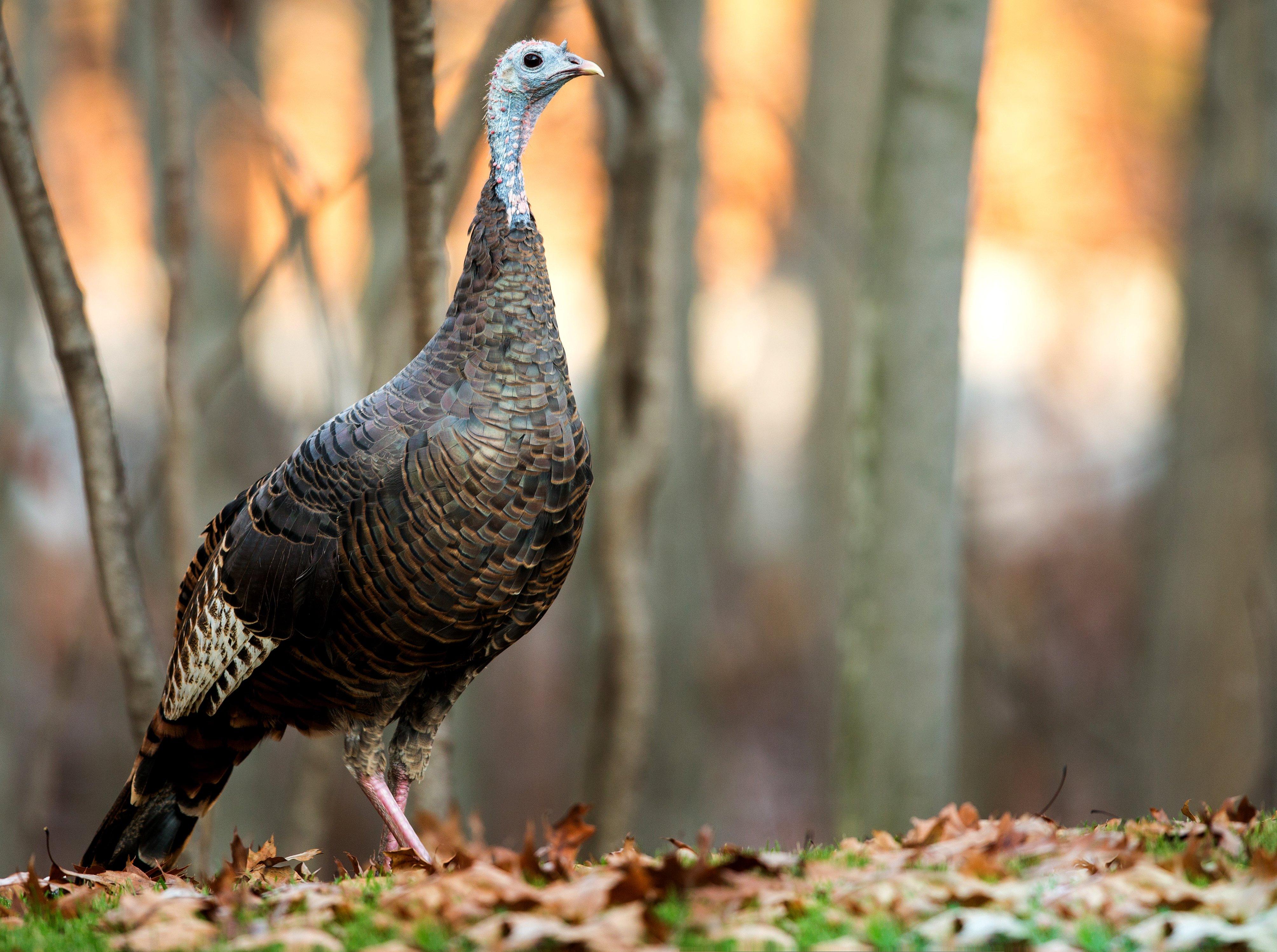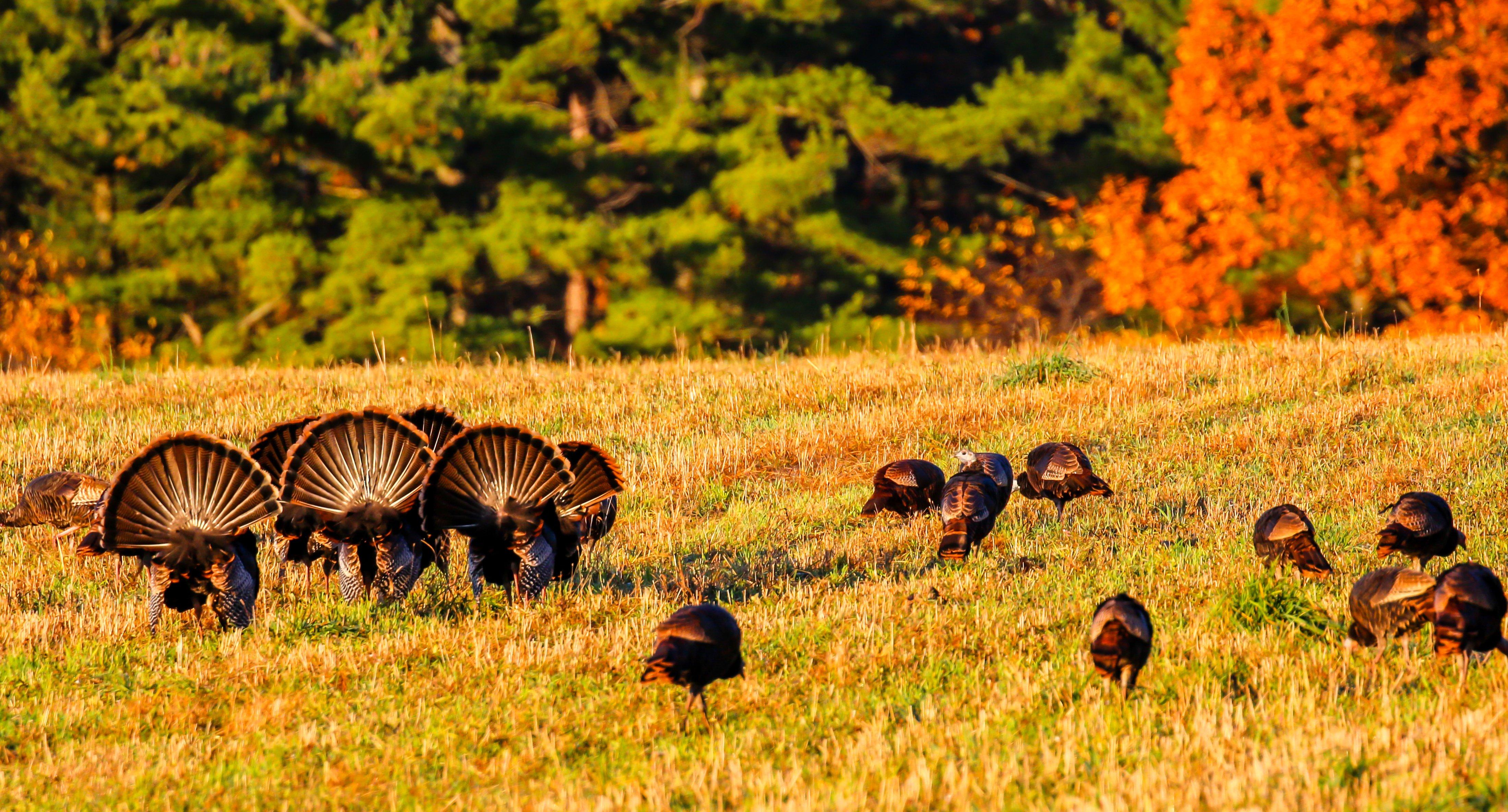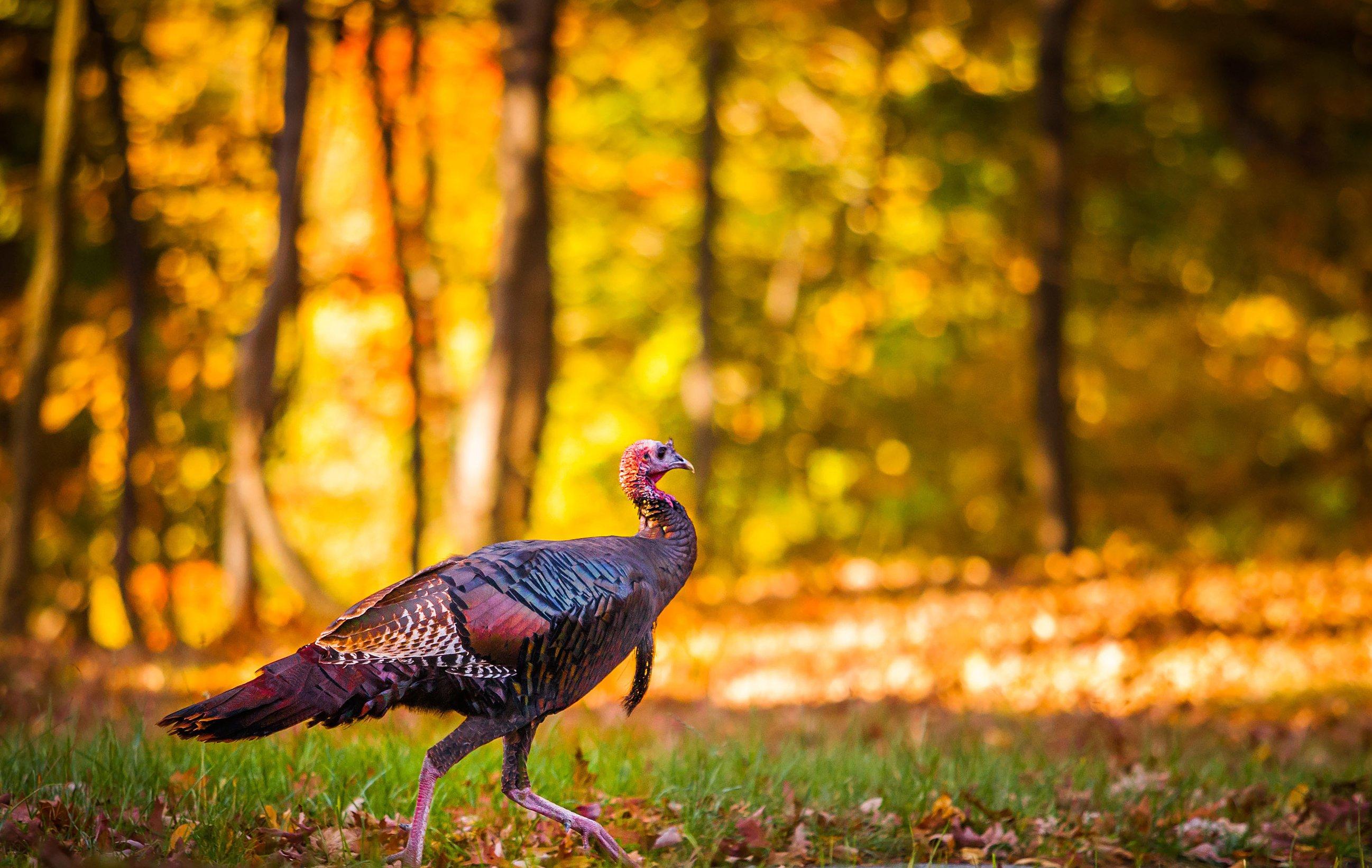New research shows just how valuable certain hens are for poult production, so is it time to stop hen harvest altogether, including during fall seasons?
Your great grandfather would be shocked that you shoot turkeys in the spring. Until about 50 years ago, turkey hunting was strictly a fall sport. Today, while spring hunting has eclipsed the later season in popularity, more than 40 states still hold fall hunting seasons for wild turkeys.
But fall seasons have a problem. It’s difficult to determine the sex of immature turkeys, which make up the bulk of the fall harvest, so states set the harvest as either sex, or a mix of male and female turkeys. Fall hunting tactics, which often include busting up family flocks and calling them back together, can lead to hen-heavy harvest numbers. Mary Jo Casalena, retired turkey biologist for the Pennsylvania Game Commission, explains, "Females comprise the majority of the harvest because they are with the brood flocks, which are easier to call in than adult males that roam by themselves or in small groups during fall.”
In Kentucky, fall turkey harvest hovers around 65% female. Depending on seasonal harvest changes, that means 1,200 to 1,500 hens are killed during the fall season. In Pennsylvania, long a stronghold of fall turkey hunting, the numbers are even more concerning. With hens making up over 60% of fall birds harvested, that means 2,000-4,000 hens are removed from the breeding population each year, depending on total fall harvest for that fall season.

With populations on the decline, is it time to limit or stop hen harvest during spring and fall seasons? Image by James Pintar
WHY THE WORRY?
For years, strong turkey numbers meant that fall hen harvest had little impact on overall populations. Biologists have long held the belief that holding fall hen harvest below 10% of the total population would result in little to no impact on total population numbers the following year.
But turkey numbers are declining across much of their range, causing many biologists and managers to take another look at hen harvest. Brett Collier, wildlife biologist at Louisiana State University and one of the nation’s leading wild turkey researchers, shares his feelings on hen harvest of any kind. “Turkey populations are declining. We know, based on all our reproductive indices, that production per female is half of what it was 40 years ago. Thus, every female we can get on a nest each year is critical, and as several wise turkey biologists have said, ‘Dead hens don’t produce poults,’” Collier said.
We are also learning through recent wild turkey research that a surprisingly small percentage of hens are actually responsible for the bulk of poult production each season. “We know that recent research has demonstrated that only around 25% of females we monitor successfully hatch a nest and around 8% of females are successful in raising one poult 28 days post-hatch,” says Dr. Patrick Wightman, a post-doctoral research associate at the University of Georgia and a leading wild turkey researcher. “Furthermore, if the hen is successful in one year, then it has a 63% probability of being successful the next year compared to 6% probability if it failed. Holistically, this tells us that a small number of females are responsible for a lot of the reproduction in these populations. Hens with increased reproductive success may be considered ‘Super Hens.’ Data suggests these hens are often dominant hens in the hierarchy and are the first hens of their social group to initiate a nest.”
With this new research showing the value of certain hens to successful poult recruitment, along with the downturn in turkey populations, states are starting to take notice. During spring meetings, the Mississippi Commission on Wildlife, Fisheries, and Parks gave final approval to the staff recommendation of suspending the fall season for turkeys. According to Adam Butler, Mississippi Department of Wildlife, Fisheries, and Parks Wild Turkey Program Coordinator, the declining population played a big part in the decision. “Studies in other states have shown that fall seasons that allow hens to be harvested negatively impact the population, and a Mississippi State University study here indicated the same,” Butler said. “Our study showed that very small decreases in hen survival have big impacts on the turkey population. The research that MSU did for us showed that an increase as small as 2% in hen survival could stabilize or increase the population.”
Also this spring, the Kentucky Fish and Wildlife Commission has proposed several recommended changes to fall turkey hunting regulations, including reducing the fall season harvest limit from four to two turkeys, only one of which may have a beard longer than three inches.
***Don’t Miss: *IS IT TOO LATE TO SAVE THE WILD TURKEY?
SPRING HEN HARVEST
While spring wild turkey harvests are largely made up of male birds, as many as 15% of hens may grow a visible beard. Since most states simply require spring-harvested turkeys to have a “visible beard,” that means these hens can be legally taken.
Spring hen harvest totals in most states are much lower than during fall seasons, but they still may be significant. In Kentucky this past spring, 300 bearded hens were checked in. Other states also seem to hover around the 1-2% of total harvest for bearded hens each spring. Add it all up and that is a consequential number of hens that aren’t reproducing.
Since hen beards grow more slowly than on their male counterparts, they are most noticeable on more mature birds, which are often the very birds Wightman described above as being the most likely to reproduce effectively season after season. That means that, while total numbers of spring hen harvest are low, many of those birds that are shot could be the most valuable members of the flock when it comes to poult production.
WHAT CAN HUNTERS DO?
I’m not advocating for the end of fall turkey hunting. Heck, I enjoy a little break from deer that time of year and I’m a big fan of wild turkey on the Thanksgiving table. I am suggesting that hunters in areas where turkey populations are declining should consider the big picture before pulling the trigger on a hen.
Consider targeting bearded males during your fall hunt. Or if a mixed family flock comes in, give the older, more mature hen a pass and take a young bird of the year. “If fall hunters have a chance to select a smaller bird when picking one out of a flock, it would go a long way to helping turkeys locally and statewide,” says Casalena. “Lots of hunters select the largest bird that comes in after breaking up a brood flock, but that’s usually an adult female. I’m asking you to let her go, if possible. She’s the one with the most experience to help the flock survive through winter. If you can, take a young male or female; they have the lowest survival and breeding success.”

Target either male birds or young hens in the fall, leaving the more mature hens to breed the following spring. Image by Michael Tatman
And, even though your state may allow for the harvest of bearded hens in the spring, consider giving them a pass. It’s not difficult to tell a gobbler from a hen in the field, particularly during the spring breeding season. Don’t let the presence of a beard be your deciding factor in pulling the trigger.

It isn’t that hard to distinguish toms from hens, even during fall seasons, if you know what to look for. Image by Spiritfall
Will limiting the spring and fall hen harvest help to reverse the downward trend in wild turkey population numbers? It sure can’t hurt.










